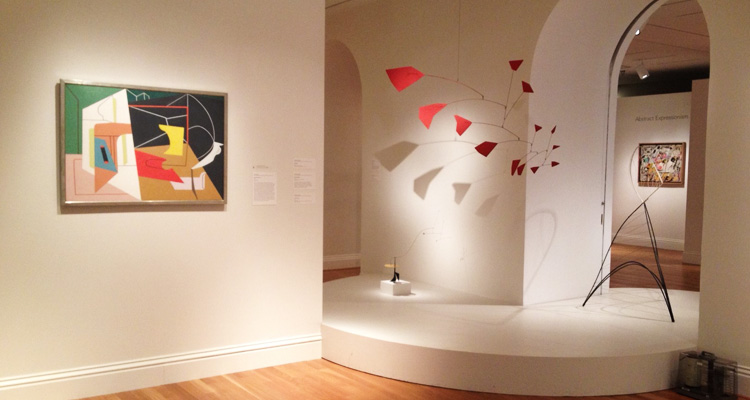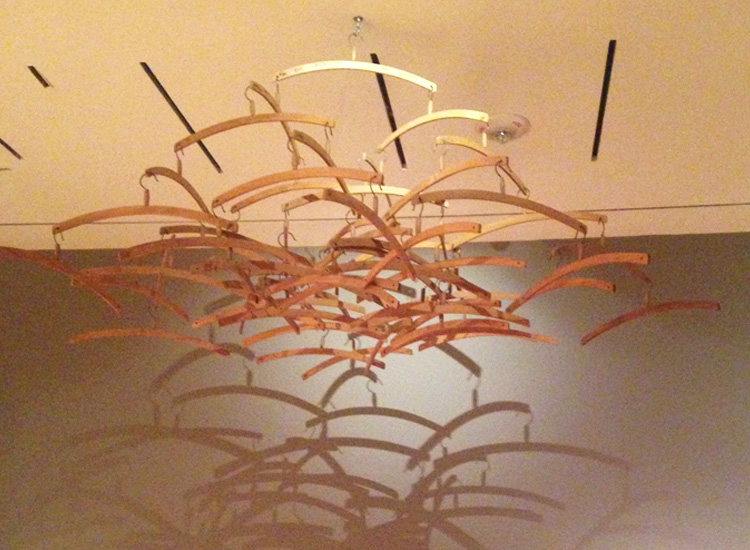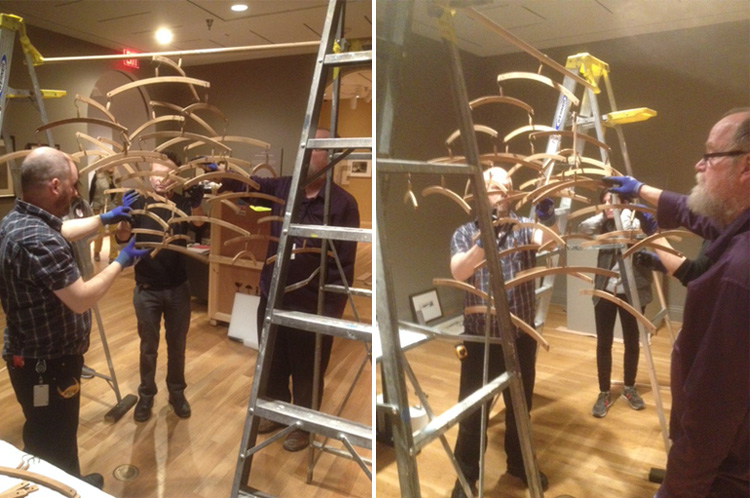
Installation view of Made in the USA. Photo courtesy The Phillips Collection
With the heat and patriotic spirit of early July upon us, now is a great time to check out Made in the USA before it comes down on August 31. As a new intern, I’ve enjoyed spending some time with this exhibition; especially a few works by some of my favorite artists, among them Alexander Calder, whose works Hollow Egg, Red Polygons, and Untitled are currently on view. The first time I wandered the galleries I was immediately drawn to the three sculptures for their distinct presence amidst the two-dimensional works that make up most of the show. In fact, the way Calder’s work is displayed makes it visible from three of the galleries; a curatorial decision I can’t help but think of as a strategy to emphasize the universal relationships these sculptures have with painting, and image-making in general. Next to Stuart Davis’s Egg Beater No. 4, it’s easy to recognize the parallels between Calder’s use of wire and strokes on a canvas.
Another hallmark of Calder’s work (seen in two of the three pieces on display) is his exploration of movement. The suspended metal shapes act like sails that catch the quiet breezes created by the motion of viewers in the gallery space, allowing the mobiles to rotate with currents of air. This delicate movement is to me what makes viewing the works a powerful experience; they depend on their audience in order to become mobile at all.
Elaine Budzinski, Marketing Intern



